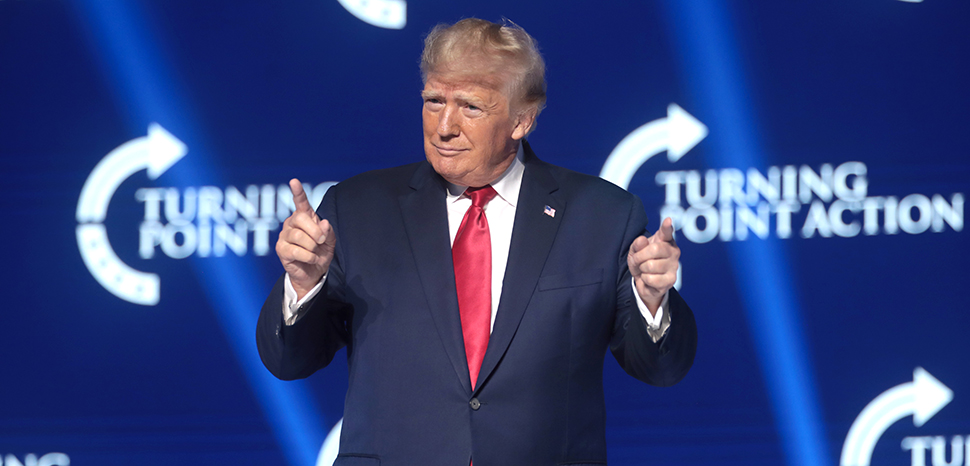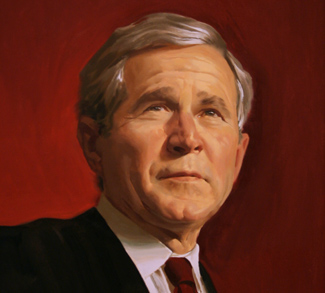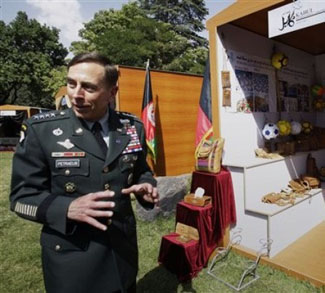Donald Trump got used to shaking the foundations of NATO with his public statements, more so than any of his predecessors. In 2016, then-candidate Trump’s statements about the unfair fiscal burden carried by the United States compared with its European allies was nothing fundamentally new in NATO’s nearly seven-decade history, as mentioned by Fabrice Pothier and Alexander Vershbow. We can, for example, refer to the experience of the 1970s, when Henry Kissinger pressed US European partners toward an increase of their defense expenditures. But in 2016 Trump moved ahead and declared his readiness to make conditional the US commitment under Article 5 of NATO’s founding treaty, which obligates members to come to the defense of any ally that comes under attack. Trump has suggested that would depend on whether the ally in question had “fulfilled [its financial] obligations to us.” In this Trump meant NATO’s 2 percent of gross domestic product target for defense spending.
In 2016 just two countries of NATO met the two percent target – the US and the UK. After his inauguration in January 2017 and over the next four years, President Trump had an opportunity to use this unsatisfactory defense performance of European countries as a pretext to make good on his threat, but he never did – the US remains in NATO, ensuring security in Europe.
Almost eight have years passed since that time, and in February 2024 Donald Trump made a similar statement in an even more attention-grabbing way. Trump, speaking during a political rally in South Carolina, quoted the president of “a big country” that he did not name as asking, “Well sir, if we don’t pay, and we’re attacked by Russia – will you protect us? I said: ‘You didn’t pay? You’re delinquent?’ He said: ‘Yes, let’s say that happened.’ No I would not protect you. In fact I would encourage them to do whatever the hell they want. You gotta pay.”
Trump has just reminded the European NATO countries about their obligations to spend more on defense – at least two percent of GDP. This is what NATO has requested since 2006, when NATO defense ministers agreed to commit said minimum to ensure the Alliance’s military readiness. This is what Trump has focused his attention on since 2016. His recent reminder is bundled in a manner inherent to him – a mix of warnings, threats and ultimatums. Yet in contrast to the 2016 version, the 2024 Trump statement is much more consequential, even alarming, in the wake of the 2022 Russian invasion of Ukraine.
How have European countries responded in 2024?
It seems that in 2024, NATO and European leaders are taking Trump’s statements seriously. Perhaps this is because Trump has now put on a brighter spotlight on the issue, or perhaps because 2016 differs from 2024 in one major way – Russia is now waging a full-scale war in Ukraine, which, if the situation develops accordingly, could drag European countries into the conflict as well.
NATO Secretary General Jens Stoltenberg responded that “any suggestion that allies will not defend each other undermines all of our security, including that of the United States, and puts American and European soldiers at increased risk.” EU Council President Charles Michel said: “Reckless statements on NATO’s security and Article 5 solidarity serve only (Russian President Vladimir) Putin’s interests.”
Germany’s foreign ministry posted the message ‘one for all and all for one’ with the hashtag “StrongerTogether” on its English language X account following Trump’s comments. Polish Defence Minister Wladyslaw Kosiniak-Kamysz stated that “NATO’s motto ‘one for all, all for one’ is a concrete commitment. Undermining the credibility of allied countries means weakening the entire NATO.”
The president of Estonia, another eastern flank NATO country, Roberta Metsola, was more concrete than her partners from Poland: “I think what the presidential candidate in America said is also something to maybe wake up some of the allies who haven’t done that much.” Metsola went on to say that the European Union should spend more on defense.
EU Internal Market Commissioner Thierry Breton was among the most decisive and forward looking: “We have heard that before… nothing new under the sun… we cannot flip a coin about our security every four years depending on this or that election, namely the US presidential election.” Breton, too, was angling for a boost European defense expenditures.
Did Europe progress in defense expenditures since the 2014 annexation of Crimea?
As of 2024, there are now 11 countries that meet the NATO target. This compares to just three countries in 2014 – the US, the UK and Greece. Obviously, this represents progress; however, there are still 19 countries, including Canada, that do not meet the two percent NATO target. Among these 19 countries, nine countries still have defense expenditures lower than 1.5 percent of GDP. Moreover, since 2014 Croatia and Turkey have reduced their defense expenditures as a share of GDP.
Thus, this all gives reason to believe that NATO suffers from a lack of internal discipline, and that administrative levers within NATO must be empowered to encourage compliance.
At the same time, since 2014, NATO has demonstrated excellent results in terms of increasing spending on military equipment. Thus, while in 2014 only seven NATO countries exceeded 20% of equipment expenditure as a share of defense expenditure, as of 2023 all NATO countries exceeded this indicator. Moreover, nine NATO countries have equipment expenditures as a share of defense expenditures that exceed 30%.
In other words, it cannot be said that since 2014, Europe has completely ignored Trump’s calls during his first presidential term. Questions remain however about overall defense spending.
Trump’s threat to Europe to increase defense spending to the minimum target or risk the US not following through on its obligation under Article 5 of the NATO Charter, which was made last week, has already had an immediate impact on European leaders. The case of Germany’s response is certain, with Berlin having already informed NATO that it will allocate a record amount of money for defense. For the first time in three decades, Germany has announced a planned allocation of an amount equivalent to two percent of GDP. The government has informed NATO of a transfer of $73.4 billion for military needs. During the Cold War, Germany’s military spending quota routinely exceeded 3% of GDP.
NATO responded immediately too. Just before the NATO ministerial meeting, NATO Secretary General Jens Stoltenberg announced a record increase in defense spending: “In 2024, NATO members in Europe will invest $380 billion in defense. This will exceed 2% of their total GDP for the first time,” the NATO Secretary General said. In 2023, this figure was 1.85%. The secretary general also announced how many NATO members will spend more than 2% on defense in 2024: “I expect that this year 18 allies out of 31 NATO member states will spend two percent of GDP. This is also a record. This is a six-fold increase since 2014, when only three allies met this requirement,” Stoltenberg added.
What is driving defense expenditures in Europe?
Effective deterrence requires not only a powerful military component, but also well-known instruments of geopolitics, including effective diplomacy. Perhaps this is where European leaders feel real uncertainty should the United States withdraw from the European security architecture. Would NATO without the United States be a sufficient geopolitical entity to effectively deter external threats? And to be quite frank and substantive, which NATO countries will be able to fulfill the representative role of NATO that the United States is used to playing?
Last year, Henry Kissinger made an extremely important statement in this regard. Kissinger said the political center of gravity in Europe is shifting inexorably toward Berlin, presenting a fresh challenge to the country’s leadership. “The leading country has to be an example of moderation and wisdom in balancing the interests of all the [European] countries,” said Kissinger.
This is probably what was discussed during Chancellor Scholz’s visit to the White House following his meeting with President Biden in February.
At the same time, the most pressing issue remains US nuclear weapons in Europe, which successfully provided nuclear deterrence against the USSR and Russia for decades. Nuclear deterrence, which, after Russia’s invasion of Ukraine in 2022, has been increasingly supported by the population of Europe, particularly Germany and the Netherlands. Nuclear deterrence, which has been a fundamental element of NATO’s concept since the 1950s, and continues to be so today.
In general, the issue of European security in the context of US geopolitical interests and objectives in other regions; the role of NATO; conventional military capabilities in Europe; US nuclear weapons in Europe; and the role of active diplomacy remain urgent issues, but they are also issues that should be addressed by NATO partners with the participation of the United States in a consistent and effective manner. This is in the interest of not only NATO partners but also adversaries regarding world order, and Trump’s recent statements are a way of reminding European colleagues that this issue needs to be addressed this time; it is urgent. This is the issue of responsibility and contribution of each country of NATO to global and regional security.
The views expressed in this article belong to the authors alone and do not necessarily reflect those of Geopoliticalmonitor.com.




